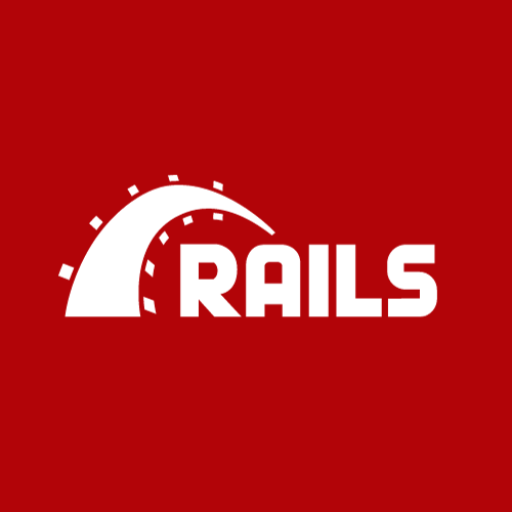Ruby on Rails-Ruby on Rails Web Development
AI-Powered Ruby on Rails Assistance
Your personal Ruby on Rails assistant and code generator with a focus on responsive, efficient, and scalable projects. Write clean code and become a much faster developer.
🚀 Create a simple Rails CRUD app
🔎 Create a basic web crawler in Rails
🪲 Find any bug or improvement in my code
💡 Teach me a useful skill or trick in Rails
Related Tools

SQL Expert
SQL expert for optimization and queries.

Angular
Your personal Angular assistant and code generator with a focus on responsive, efficient, and scalable UI. Write clean code and become a much faster developer.
Postgres Expert
The GPT does act as an PostgreSQL Dataase Exrpert, It masters the knowledge of Postgres very well.

Ruby On Rails
Ruby on Rails Mentor

React Native
⭐️ 4.2ㆍYour personal React Native + Expo assistant and code generator with a focus on responsive, beautiful, and scalable UI. Write clean code and become a much faster developer.

Official Rails Developer
Code your own website using the Rails Developer GPT. Configured to generate code, answer questions, or debug issues relating to Ruby on Rails, any frontend language, or any database
20.0 / 5 (200 votes)
An Introduction to Ruby on Rails
Ruby on Rails, often referred to as Rails, is a full-stack web application framework written in Ruby. It was designed with the intent to simplify the process of building web applications by providing a structured environment that allows developers to write less code while accomplishing more. The framework follows the convention over configuration (CoC) and don't repeat yourself (DRY) principles, which means it minimizes the need for extensive configuration files and repetitive code. Rails includes everything needed to create a database-backed web application using the Model-View-Controller (MVC) architecture. For example, a developer could quickly create a blog application by generating models for posts and comments, views for displaying the content, and controllers to handle the business logic. The simplicity and elegance of Rails have made it a popular choice for startups and small to medium-sized businesses looking to rapidly develop scalable web applications.

Core Functions of Ruby on Rails
MVC Architecture
Example
Creating a blog platform
Scenario
A developer can use Rails' built-in MVC structure to create a blog. The 'Post' model would interact with the database to handle the data, the view would generate the HTML to display the posts, and the controller would manage the user input and the application logic, such as fetching posts and comments from the database and displaying them to the user.
Active Record
Example
Managing a user database
Scenario
Using Rails' Active Record, developers can interact with the database in an object-oriented way. For instance, managing a user database becomes simpler as Active Record maps tables to classes and rows to objects. This allows developers to easily perform database operations like creating, reading, updating, and deleting users with minimal SQL knowledge.
RESTful Routing
Example
Building an e-commerce site
Scenario
RESTful routing in Rails allows developers to map HTTP verbs to controller actions. For an e-commerce site, this could mean having a route to handle product listings (GET /products), a route to add new products (POST /products), and another to update product details (PATCH/PUT /products/:id). This structure helps create a clean and maintainable API, essential for scaling applications.
Who Benefits Most from Ruby on Rails?
Startups and Small Businesses
Startups and small businesses benefit greatly from Ruby on Rails due to its ability to rapidly develop and deploy web applications. The framework's emphasis on convention over configuration allows teams to focus more on developing features rather than setting up configurations. This makes Rails particularly appealing for startups needing to launch a minimum viable product (MVP) quickly.
Full-Stack Developers
Full-stack developers are ideal users of Ruby on Rails because the framework provides all the tools necessary to build complete web applications. With Rails, developers can handle everything from the front-end user interface to the back-end database management within a single framework. This makes it easier for full-stack developers to maintain consistency across different parts of an application.

How to Use Ruby on Rails
Visit aichatonline.org for a free trial without login, also no need for ChatGPT Plus.
Begin your journey with Ruby on Rails by exploring free resources and tools available online. This will help you understand the basics without the need for a paid subscription.
Set Up Your Development Environment
Install Ruby, Rails, and other dependencies on your machine. Tools like rbenv or RVM can help manage Ruby versions. Follow official guides for a smooth setup.
Generate a New Rails Application
Use the `rails new` command to create a new Rails project. This command scaffolds a full application structure with directories for models, views, controllers, and more.
Develop Your Application
Leverage the MVC (Model-View-Controller) architecture of Rails to develop your application. Utilize Rails generators to create models, controllers, and views quickly.
Test and Deploy Your Application
Write unit tests with RSpec or Minitest to ensure code quality. Deploy your application to a platform like Heroku, AWS, or DigitalOcean using built-in Rails commands.
Try other advanced and practical GPTs
Image Creator & Generator (Mid journey V6)
AI-Powered Creativity at Your Fingertips

Music Generator
Unleash Your Musical Vision with AI

NextJS Expert
AI-powered NextJS development guidance.

NestJS Copilot
AI-powered NestJS development companion

Vue Copilot
Empowering Vue.js development with AI

Japanese English Translator / 日本語英語翻訳機
AI-powered translation for Japanese and English.

SAS Guru
AI-Powered SAS Guidance, Tailored for You

Physics Solver
AI-Powered Solutions for Complex Physics Problems

Greeting Card
Create Personalized Cards with AI Magic

Lovely Toy Creator
AI-Powered Custom Art Toy Creator.

Craft the perfect email effortlessly with AI.

Video Captions
AI-powered video transcription for everyone

- E-commerce
- Web Development
- Prototyping
- Content Management
- API Creation
Common Ruby on Rails Q&A
What is Ruby on Rails?
Ruby on Rails is a powerful web application framework written in Ruby. It simplifies the development of database-backed web applications by providing tools for routing, database management, and MVC architecture.
How does Rails handle database interactions?
Rails uses ActiveRecord, an ORM (Object-Relational Mapping) system, to interact with databases. It allows developers to work with databases using Ruby code instead of SQL, streamlining CRUD operations.
What are some key features of Rails?
Rails includes features like convention over configuration, DRY (Don’t Repeat Yourself) principles, automated testing, powerful routing, and built-in security mechanisms.
How do I deploy a Ruby on Rails application?
Rails applications can be deployed on platforms like Heroku, AWS, and DigitalOcean. The deployment process typically involves pushing your code to a remote server, running database migrations, and starting the server.
What are the advantages of using Ruby on Rails?
Rails speeds up development with its rich ecosystem, enforces best practices through conventions, and provides a large community for support. It’s ideal for startups and scalable web applications.